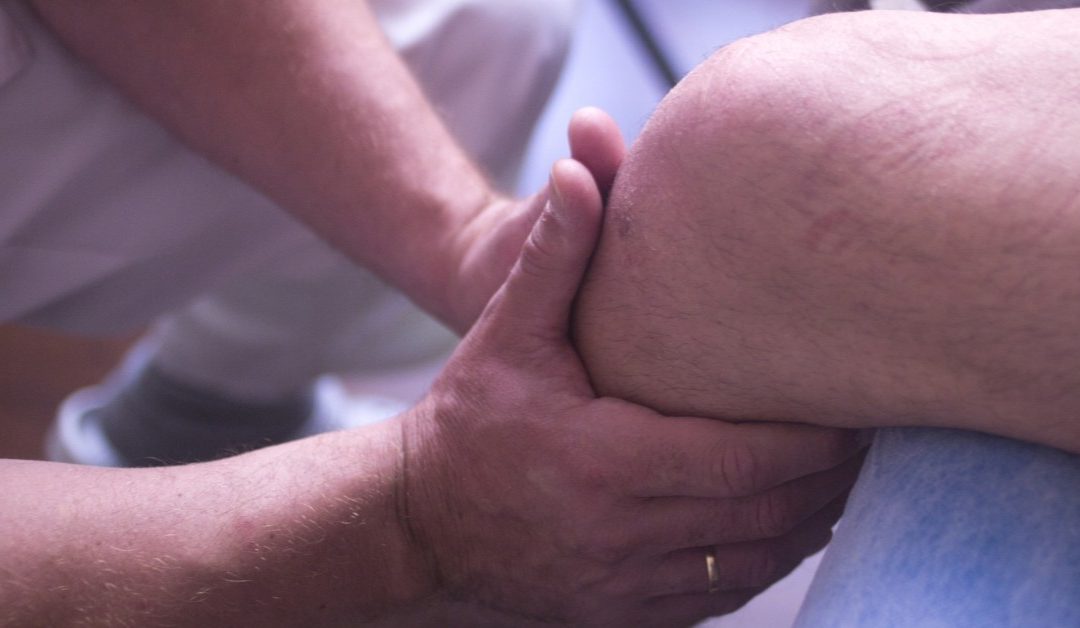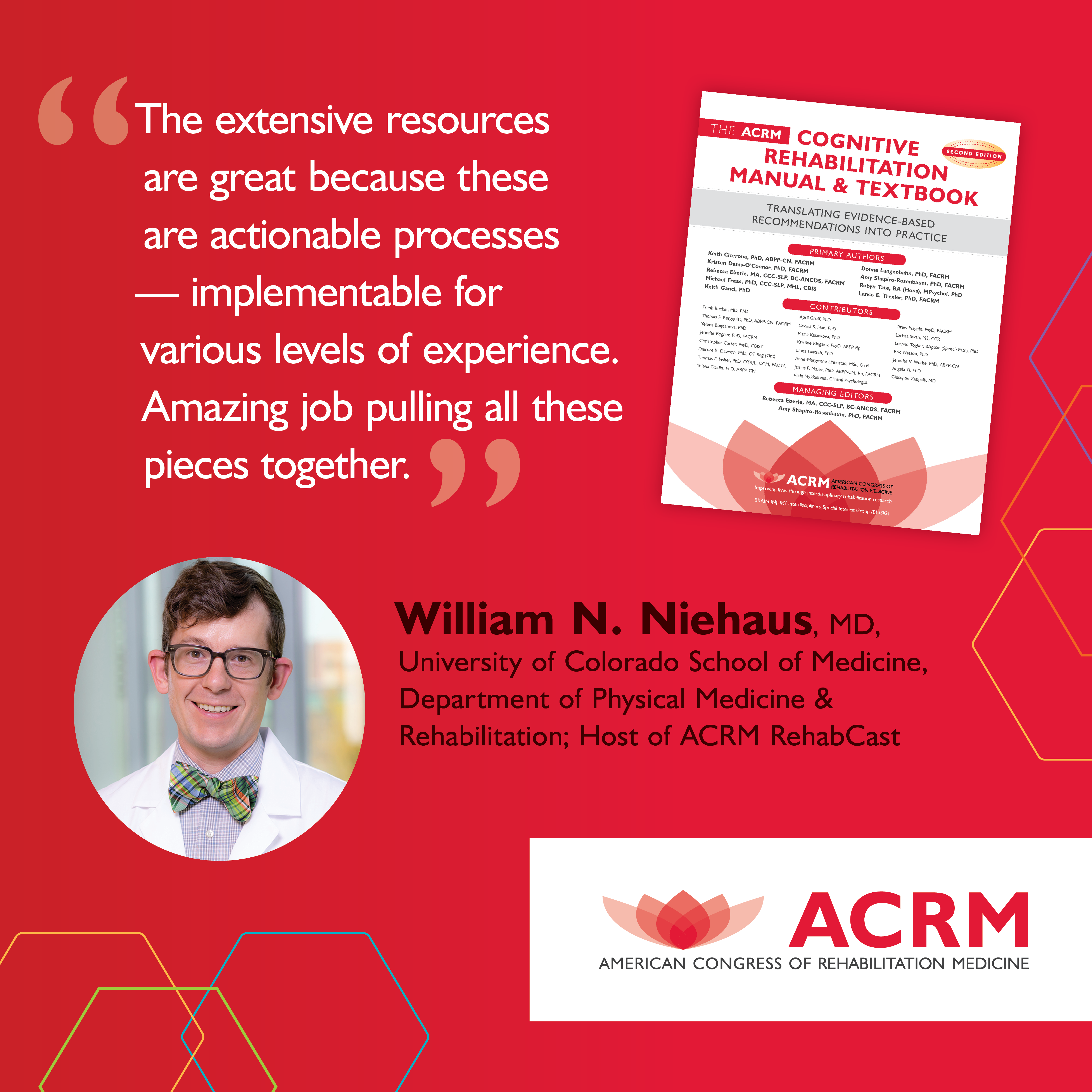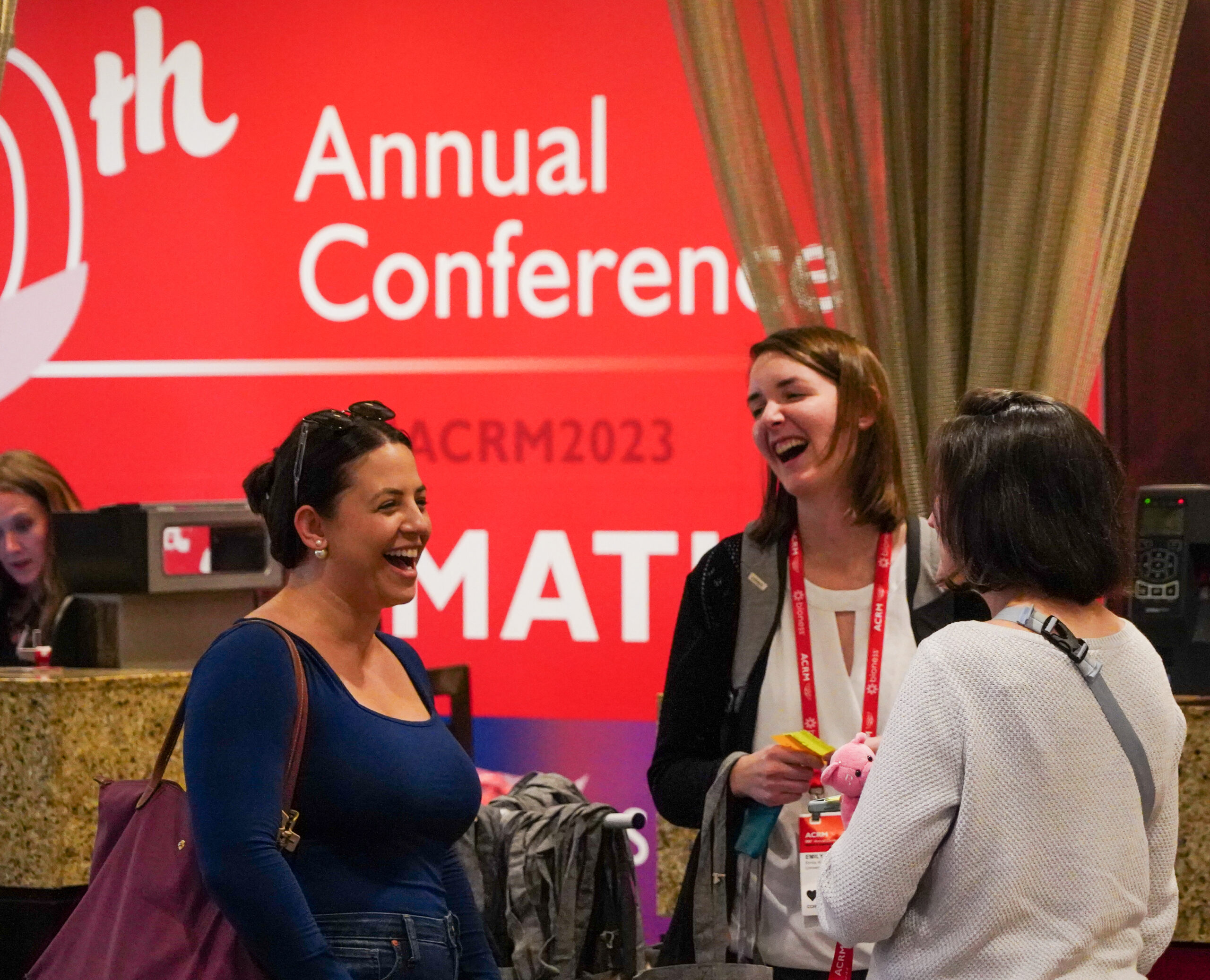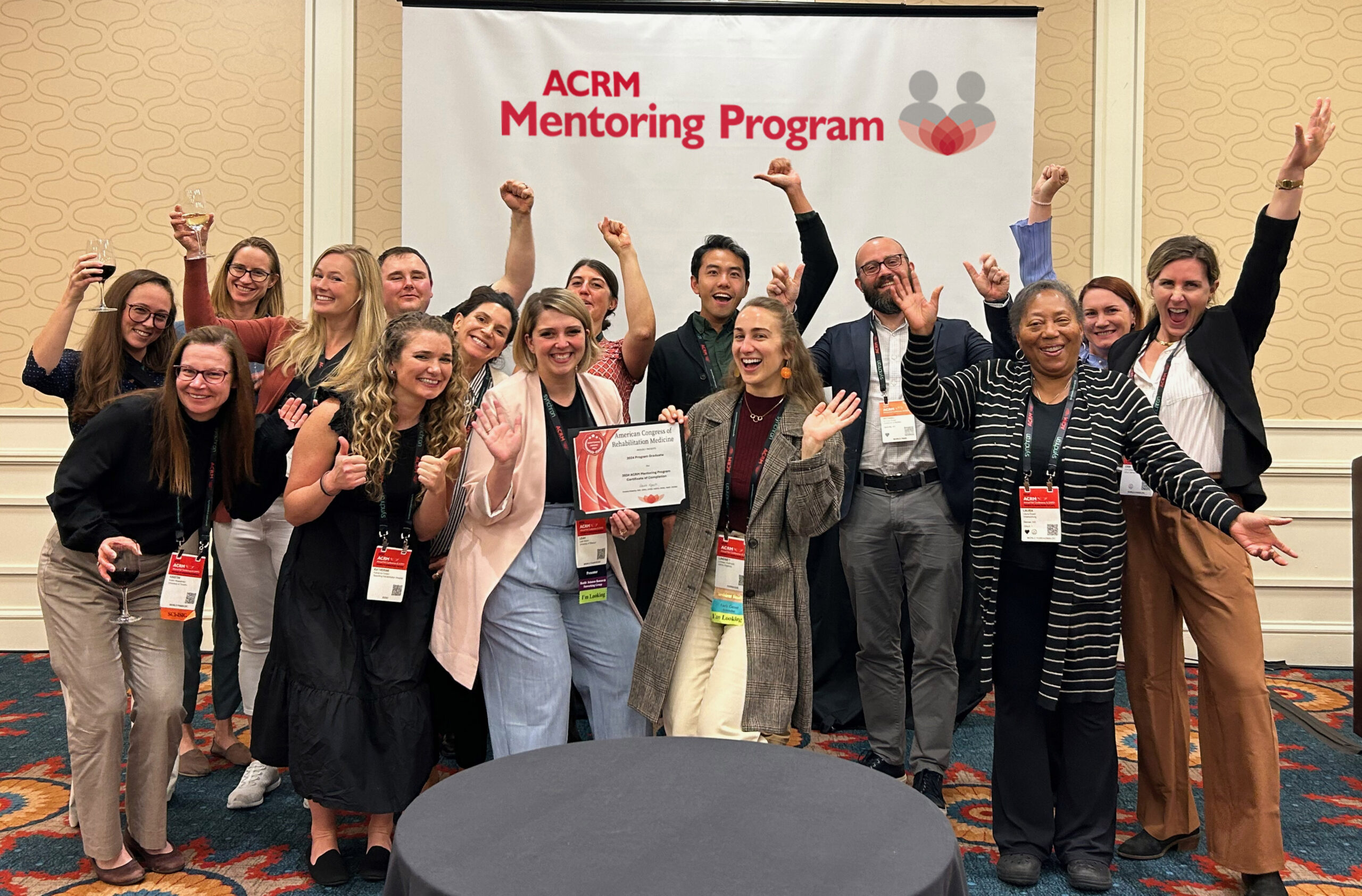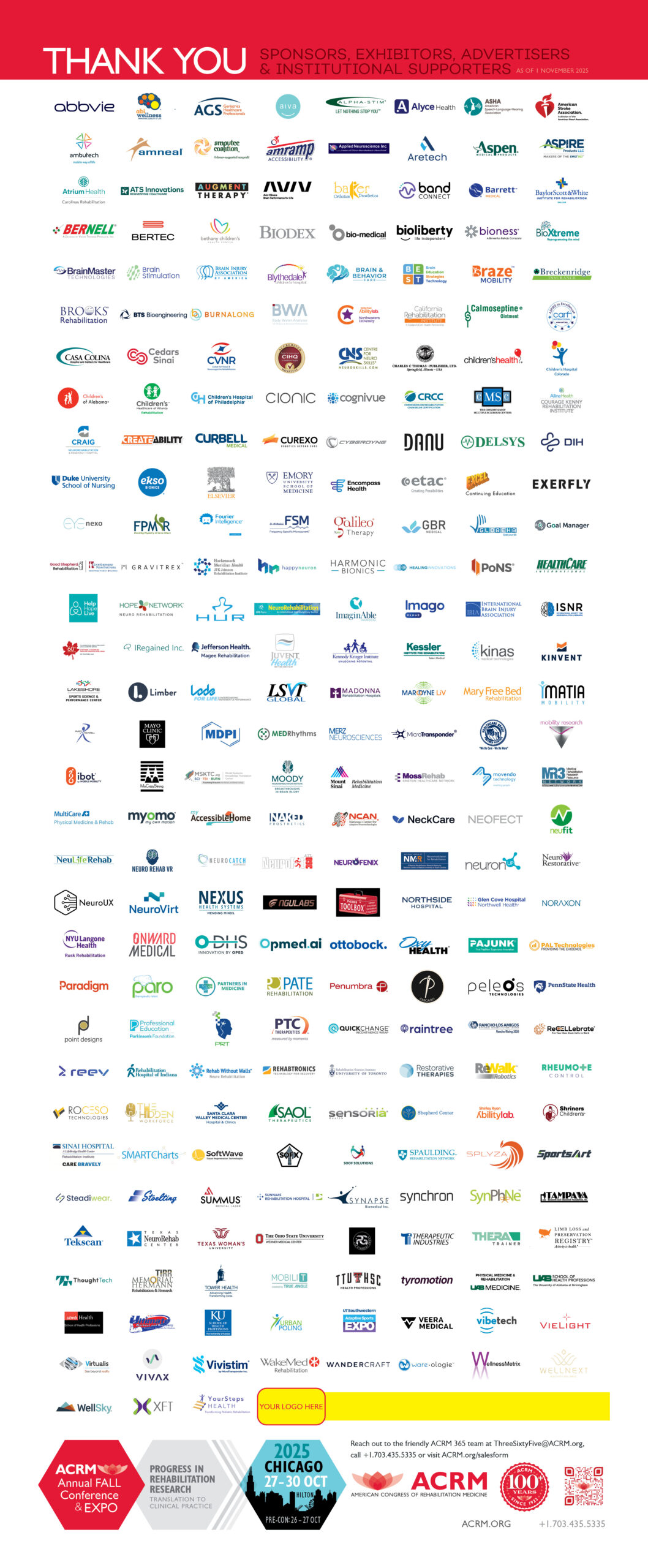Trying to recover from a traumatic brain injury, a back injury, a spinal cord injury, or any injury where your movement has been severely impacted is a challenge. It’s a physical challenge, but it’s also a mental and an emotional one as well. Rehabilitation is chock full of highs and lows on a patient’s journey, and it’s super important when a patient enters rehabilitation for the first time that they feel comfortable on this often difficult road to recovery.
American Congress of Rehabilitation Medicine, or ACRM, is dedicated to helping those with disabilities. We work non-stop to ensure that research continues, pioneering work is made available as soon as possible, and that knowledge is shared across all spectrums so that rehabilitative physicians and professionals can learn, grow, and innovate from each other. We are a member-driven organization, boasting over 3,000 members and growing quickly. At our annual conference, we have a chance to come together, learn from each other, network, and grow. Below, we’ll offer up more tips for the rehabilitative professional as they begin treatment with new patients. Contact us today to learn more!
GUIDE TO HELPING REHABILITATIVE PROFESSIONALS WITH NEW PATIENTS
Encourage Questions
Oftentimes, there is so much to do with a new rehabilitation patient that it seems like the appointment is over as soon as it began, and you’ve barely covered anything, including questions. ACRM recommends that you try to either set an extra long appointment for the first appointment, or you don’t try to squeeze as much rehabilitative work in as you normally would for an appointment. Instead, we’ve found that it’s best to do all of the initial stuff at the beginning, perform a very short rehabilitation session, and then leave plenty of time for questions at the end. This also ensures that the patients can ask questions when they arise throughout the rehabilitation session as well.
We understand that setting your patient on the right path of healing is what you do and that your job is to ensure that your patients are progressing in their rehabilitative plans. However, taking time at the beginning to ensure your patients’ concerns are answered will only serve you in the long run.
Establish Rapport
Odds are, your patient has never met you before. It takes time to form that bond of trust. This will only serve you in the end as your patients are much more likely to listen to you when they trust you. For instance, when you tell someone who is recovering from a car accident that they are not ready to run, they will probably listen if they trust you. If they don’t trust you, they will be more likely to bend the rules — much to the detriment of their physical therapy plan. While that is not your responsibility, it does impact your ability to heal your patient.
ACRM recommends that you establish this rapport as soon as possible in rehabilitative care. This means you take the time in the beginning for idle chit-chat. Not only will discussing the weather, the patient’s kids, and their fur babies put them at ease, but it will also go a long way in accelerating their care.
Discuss Any Needed Equipment
Physical therapy usually requires a certain amount of special equipment. Some of this is exceedingly specialized that your patients will only be able to do with you. However, there are probably some additional rehabilitative exercises that would be highly beneficial to your patients if they had some simple equipment around their home. Most of this is very affordable, such as some light dumbbells, medicine balls, stability balls, and the like. At the beginning, discuss any equipment needs with your new rehabiliatative patient, and make sure that is something that they are willing to invest in before you assign them any physical therapy exercises that require said equipment.
Give Them Your Number
As discussed in our previous blog, it will be hard for your patients to remember much after their first rehabilitative appointment due to their anxieties and the newness of the situation. They will probably have questions after their first appointment, and waiting for their second physical therapy appointment can be too long. After all, you don’t want to go a whole week without work being done simply because the patient was too afraid to do anything because they had forgotten your directives.
Here is a good place where technology could be leveraged and utilized. ACRM recommends that you or your organization have some sort of online communication or portal where questions can be asked and answered in a timely manner. If this is not possible, or your patients are those who are uncomfortable with technology, then you most definitely want to be available by email, phone, or text messaging. This will not only give your patients peace of mind knowing they can reach you with the littlest concerns (because after a traumatic injury such as a brain injury or spinal cord injury, they will undoubtedly be wary of causing further injury), but it will speed their recovery as well, both mentally and physically.
Celebrate!
As a rehabilitative physician, you understand the hardship your patients have just gone through to regain mobility in their bodies after a traumatic injury. You have seen their hard work and their trials and struggles firsthand. You know the sacrifices your rehabilitative patients have made on their road to recovery. While some may only have been with you a short time, some have been with you a year or more. ACRM realizes that it’s important to explain to new rehabilitative patients, especially to those who will be with you for a while, that the road may be long, but it will be worth it in the end — and that you will be with them every step of the way. Encouragement, positive words, and a positive attitude is super important, especially in the early stages of rehabilitation. Make it a point to end each rehabilitative session on a positive note. Smile often; laugh more; celebrate!
JOIN ACRM TODAY
American Congress of Rehabilitation Medicine, or ACRM, is a non-profit organization dedicated to improving the lives of disabled people. For almost 100 years, we’ve been working with hospitals, universities, professional organizations, advocacy groups, and rehabilitation professionals around the world. We are the fastest-growing professional association in the physical medicine field. With over 3,000 members strong, we publish the Archives of Physical Medicine and Rehabilitations, which is the most-cited journal in rehabilitation. We have a heart for those in need, and our members work tirelessly and passionately to help.
In that vein, we offer meetings as well as an annual conference so that our members can stay in touch with one another, learn what each other is working on, and collaborate whenever possible. We believe we are stronger together, which includes working together on a regular basis and sharing knowledge and studies. We offer local community groups in your area where you can connect with those in your field, from athlete development and sports to military veterans’ affairs. These groups are dedicated volunteers who help improve rehabilitative medicine in all areas. Certain projects are completed, as well as research, offering a great chance to innovate and progress.
At our annual conference, there will be so much to see and do that you will probably be forced to choose at some point. Thankfully, there is a lot to choose from, from all-star presenters, educational break-out sessions, cognitive rehabilitation training, certified brain injury training, an early career development course, and more. There will be access to scientific papers, dozens of ACRM community meetings, and four receptions, which are excellent networking opportunities. Our annual conference in October expects to be a great place to learn, share, and grow. If you are interested in partnering with ACRM, reach out to us to learn more today!


